The Meteor-M series (original) (raw)
The Meteor-M series
During the 2000s, Moscow-based VNIIEM Corporation devloped a new version of its Soviet-era Meteor satellites designed for a variety of remote-sensing tasks, from weather-watching to imaging of the Earth's surface. The series recieved a designation Meteor-M.
Previous chapter: Meteor satellite family
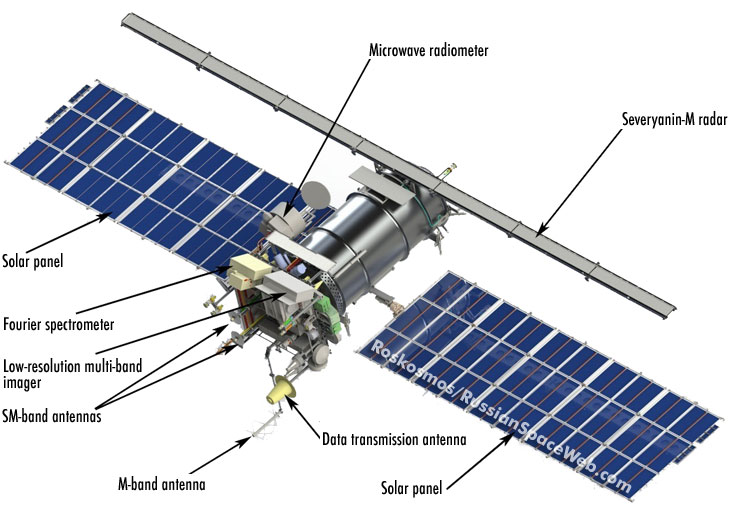
Meteor-M satellite. Credit: Roskosmos
From the publisher: Please help to keep this site open and current! The pace of our development depends primarily on the level of support from our readers.
Meteor-M constellation
Original plans envisioning four launches of Meteor-3M satellites during 1998-2000, however they had never materialized. (359) Instead, VNIIEM embarked on the development of the Meteor-M series, which by the end of the first decade of the 21st century were expected to include three satellites of two different designs. The main goal of the first two satellites was to provide weather forecasting, along with monitoring of the ozone layer, radiation levels in space, observation of sea and ocean ice cover. Meteor-M No. 3 would also be equipped with a new-generation phased antenna radar for ocean monitoring. (361)
As of 2012, Russian officials promised to orbit as many as four Meteor-M satellites by 2015, but these plans had to be delayed by years.
In addition to Meteor-M No. 2-1 satellite, the Russian space program also funded the development of the Meteor-M No. 2-2 satellite, which was primised to carry an experimental phased-array radar for all-weather, day and night observations, as well as the Meteor-M No. 3 satellite, which was custom-designed to observe oceans swith a high-resolution phased-array radar.
In October 2017, Roskosmos said that Meteor-M No. 2-2 satellite was scheduled for launch in 2018, then Meteor-M No. 2-3 would follow in 2020 and Meteor-M No. 2-4 would complete the constellation in 2021. However, the launch of the sea-monitoring Meteor-M No. 3 spacecraft was pushed beyond 2020 due to lack of funding. (821)
According to RIA Novosti in 2017, the launch and flight testing of the Meteor-M series was insured for 2.6 billion rubles with AO Sogaz and three other Russian insurance companies, including VSK and Ingosstrakh, which covered 35 percent of the risk.
In July 2019, Roskosmos said that the work on the Meteor M2-3 and Meteor M2-4 had been ongoing without providing planned launch dates. By the beginning of 2020, the launch of Meteor M2-3 was postponed until August 2021.
By the middle of 2020, the launch of Meteor M2-3 shifted to the end of 2021, Meteor-M2-4 to the early 2022 and Meteor-M2-5 to the first half of 2023.
By the end of 2022, launches of Meteor M2-3 and M2-4 satellites were promised in 2023. In early March 2023, Roskosmos announced that pneumatic tests of the Fregat upper stage for the launch of Meteor-M No. 2-3 were underway in Vostochny. They would be followed by electric tests, final checks and fueling of the upper stage, the State Corporation said without mentioning the launch date for the mission.
Even with all the Meteor satellites in place, the low-orbital constellation had a restricted view of the arctic region, which necessitated the development of the Arktika system, which would enable a more focused coverage of this vitally important region for Russia.
At least one more Meteor-M2 variant was planned for launch within a year from the successful deployment of the M2-3 spacecraft, which took place on June 27, 2023. As of June 2023, the launch of Meteor-M2-4 was promised before the end of the year. At the same time, Meteor M2-5 and Meteor M2-6 were in production at VNIIEM.
Meteor-MP
As early as 2012, Russian space officials promised launching a new-generation Meteor-MP satellites beginning in 2016, however in the following three years, the program was pushed beyond 2020.
A complete list of Meteor-M missions:
| No | Spacecraft | Launch date | Launch time | Launch vehicle | Launch site | Pad |
|---|---|---|---|---|---|---|
| 1 | Meteor M No. 1 | 2009 Sept. 17 | 19:55:07 Moscow Time | Soyuz-2-1b/Fregat | Baikonur | Site 31 |
| 2 | Meteor M No. 2 | 2014 July 8 | 19:58:28 Moscow Time | Soyuz-2-1b/Fregat | Baikonur | Site 31 |
| 3 | Meteor M No. 2-1* | 2017 Nov. 28 | 08:41:45.965 Moscow Time | Soyuz-2-1b/Fregat | Vostochny | 1S |
| 4 | Meteor M No. 2-2 | 2019 July 5 | 08:41:45.962 Moscow Time | Soyuz-2-1b/Fregat | Vostochny | 1S |
| 5 | Meteor M No. 2-3 | 2023 June 27 | 14:34:49.415 Moscow Time | Soyuz-2-1b/Fregat | Vostochny | 1S |
| 6 | Meteor M No. 2-4 | 2024 Feb. 28 | 08:43:26 Moscow Time | Soyuz-2-1b/Fregat | Vostochny | 1S |
*Did not reach orbit due to launch vehicle failure
Page author: Anatoly Zak; last update:February 28, 2024
All rights reserved
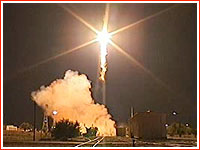
The first Meteor-M lifts off on Sept. 17, 2009. Credit: TsENKI
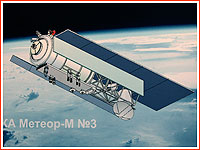
The Meteor-M No. 3 spacecraft was expected to feature a drastically different design from its predecessors in a series. Click to enlarge. Credit: VNIIEM
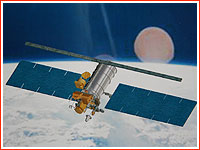
The Meteor-M satellite. Credit: VNIIEM
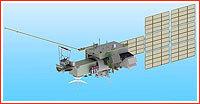
A Meteor-MP remote-sensing satellite. Credit: VNIIEM
